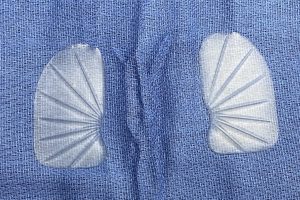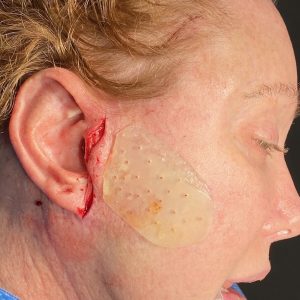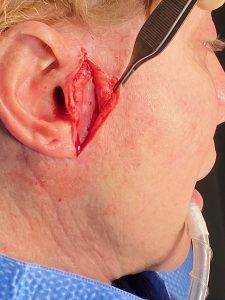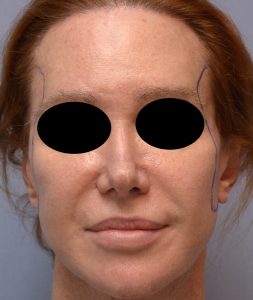Background: Soft tissue atrophy of the face most commonly occurs due to aging or weight loss. There are also some well known medical conditions that also can cause it. This atrophy is primarily fat-related and most significantly affects the temporal and cheek areas where the largest subcutaneous and compartmentalized fat exists. Whatever the cause the more gaunt facial appearance is classic above and below the bony projections of the orbital and cheekbones.
The treatment of facial atrophy for volume addition runs the spectrum of synthetic fillers and fat to implants. Whether these treatment options should be viewed as an ‘aesthetic ladder’ where one starts with injectable fillers, proceeds to fat injections when tired of fillers and only resorts to implants when all else has failed can be debated. Regardless of what rung on this ladder the patient chooses the temporal region has established options for all three methods. When it comes to the lateral face, which should differentiated from the more common cheek area, only synthetic fillers and fat are acknowledged options.
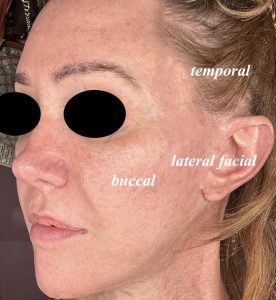
If the patient has tried synthetic fillers and fat and these have failed are there implant options to treat it?

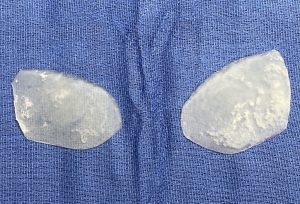



Temporal implants, while a relatively new type of facial implant, has now been around long enough to be a known reliable method of temporal augmentation. Augmenting the concave contour below the zygomatic arch of the face, however, is a different matter. Only fat injections are a recognized method of augmentation of this part of the face. Besides fat injections, however, there is a graft option that can be used which is allogeneic dermis. (e.g., Alloderm) It comes in sheets of various thicknesses up to 2mms. This is a supple graft would be a logical choice as a soft tissue augmentation material. Implant options dow exist and the two materials would be ePTFE and silicone. While ePTFE has been used as a soft tissue augmentation material for decades it is a bit stiff/hard and is to the option in a subcutaneous site. Solid ultrasoft silicone sheeting can be also be used, as in this case, and is a better soft tissue augmentation material because it is softer and more supple.
Case Highlights:
1) The first line treatment for temporal and lateral facial atrophy is autologous fat injections.
2) Temporal implants can be either a first line treatment for temporal hollowing or a secondary approach if fat grafting fails.
3) In lateral facial atrophy implants are not ever considered due to lack of awareness of what to implant. A good implant option is ultraist solid silicone sheeting.
Dr. Barry Eppley
World-Renowned Plastic Surgeon



